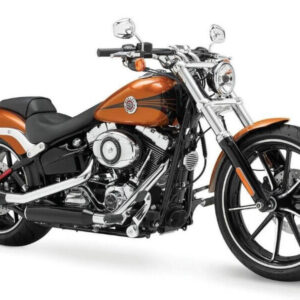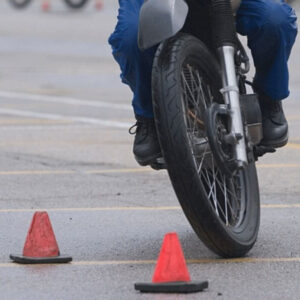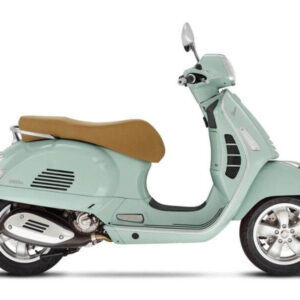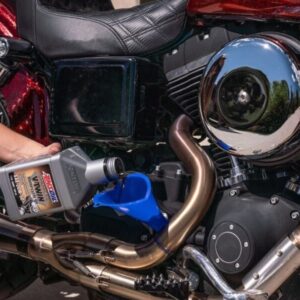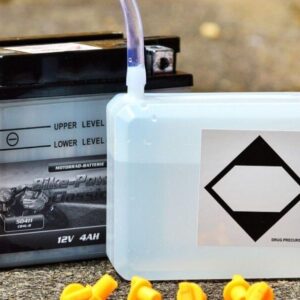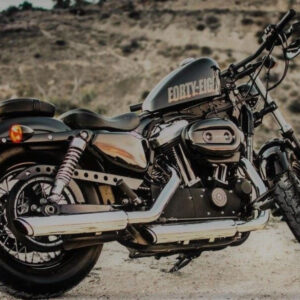How to measure head for helmet? The most effective and important safety measure a motorcyclist can invest in is the helmet. No other single piece of motorcycle gear provides more protection, or more return on investment, in the event of a crash.
This explains why a motorcycle helmet should not be bought based on the price or appearance. A rider should buy the best fitting, most highly rated helmet he or she can afford.
How to measure head for helmet?
The bottom line is the best helmet is the one that fits is comfortable and allows you to ride without inhibiting your range of motion or ability to perform the necessary functions to safely operate a motorcycle.

Shape
The most important helmet fitting aspect to consider before determining helmet size is helmet shape. The shape of the rider’s head plays a crucial role in selecting a proper fitting motorcycle helmet. All helmet manufacturers design their lids to fit a specific head shape. These often range across three primary designations – long oval, intermediate oval, and round oval.
- Long Oval – Shaped for a head which is longer front-to-back (from forehead to the back of the skull) than it is side-to-side (ear to ear).
- Intermediate Oval – Shaped for a head which is slightly longer front-to-back than it is side-to-side. Most motorcycle helmets will fall into this category as it is the most common head shape; if a helmet does not state its shape, this is usually it.
- Round Oval – Shaped for a head which has almost identical front-to-back and side-to-side measurements.
Once the head shape is determined, it is easier to filter the enormous selection of available motorcycle helmets down to a smaller, more appropriate list of those which will fit the rider’s head. Now it is time to find the correct size of the motorcycle helmet.
Sizing a motorcycle helmet
Measuring for motorcycle helmet size is as simple as looking for a good fitted hat. The difference is in how the helmet fits over the rider’s head. The best tool for this is a seamstress or tailor’s tape measure. It is flexible enough to wrap around the rider’s skull and marked in useful increments for determining an accurate size. Use it to find which size of helmet suits you:
- Wrap the measuring tape around the fullest part of the head – this will be just above the ears and about a half-inch above the eyebrows for most – and take the measurement at the forehead. To get the most accurate measure, have a friend help with this step.
- Take the measurement and compare to the size chart on the page for the desired motorcycle helmet (you might have to scroll down). Each manufacturer has sizing which is specific to its own models, so only rely on the size chart produced for the motorcycle helmet being considered.
Helmet fit
When a new helmet is first worn, it should actually be slightly tight, with the interior coming into contact with most of the head, but not so restrictive that it causes any pain. There should be no “hot spots” – places where the helmet’s interior puts pressure on specific points of the skull or face – but it should not move around freely.
With time, a helmet adjusts to match the shape of the rider’s head as it is worn, “breaks-in” and loosens a little. However, it should never become loose enough to easily turn from side to side.
- Put the helmet on – it should be a little tight as it goes on over the head.
- The helmet should sit on the head evenly with the eye port’s upper edge just above the eyebrows and offer good peripheral vision to see side-to-side.
- Put a finger between the helmet interior and the head. If it easily fits, try a smaller size. Some helmet models allow a change in the cheek pads for better fitment, so consider this when checking for proper sizing.
Finally, when deciding on a helmet style – it’s mostly up to personal choice for color, patterns and shield tint but remember the brighter and easier to see a helmet the more likely drivers spot a rider. The face shield should not obscure the rider’s vision in any way and tinted visors should only be used for sunny days.
Types of motorcycle helmets
Motorcycle helmets come in different types, or styles, each offering certain benefits to address a rider’s needs. Some riders like full all-around protection while others prefer a slim approach that mostly allows them to ride legally in those states that have helmet laws. Regardless, you have many options to choose from:
- Full Face Helmets
- Modular Helmets
- ADV Dual Sport
- Open Face Helmets
- Half Shell Helmets
How to adjust the fit of a helmet?
If you’ve measured your head correctly, there should be minimal adjustment required to fit the helmet.

Simply pop it on your head so it sits above your eyebrows and ears, and adjust the cradle, usually with a dial at the rear. The adjuster on the rear of the helmet will either tighten the cradle or, on some helmets, tighten a band that runs around the full circumference of the helmet.
There will also often be the option to adjust the rear of the cradle up or down to fit comfortably. The chin strap should be snug, but not constricting.
If the helmet features replaceable padding to adjust the fit, you may have to try several iterations to get it right.
The fit should be snug and the helmet shouldn’t be able to rotate in any direction. As mentioned, it should sit just above your eyebrows and shouldn’t be tilted back or forward on your head.
Does MIPS affect helmet sizing?
Recent advancements in tech have resulted in helmets where the outer shell has some freedom to rotate independently of the cradle, which is claimed to improve the overall safety of a helmet.
The most common form this takes is a MIPS liner (the yellow part in the photo above) and MIPS helmets often come up in independent tests as among the safest cycling helmets.
When MIPS was first introduced, the technology was retrofitted into helmets that were already available on the market. This impacted the size of the helmet because MIPS was adding a 0.5 to 0.8mm layer, which reduced available headspace.
This is no longer the case because MIPS now works with brands from the development stage of producing a helmet, so the technology is integrated into the overall design.
MIPS will introduce a small amount of movement to your helmet (around 10 to 15mm of overall movement), which can be slightly disconcerting when initially adjusting a helmet.
However, as long as this is small, and confined to the outer shell and not the cradle, you’ve nothing to worry about.
How to choose the right size kids’ bike helmet?
As with all things to do with children, the problem is they grow. That’s as true of head size as the rest of a child’s body, but as with kids’ bikes, the wrong answer is to buy larger so they grow into it – in fact, it’s even more important that a kids’ bike helmet fits properly.
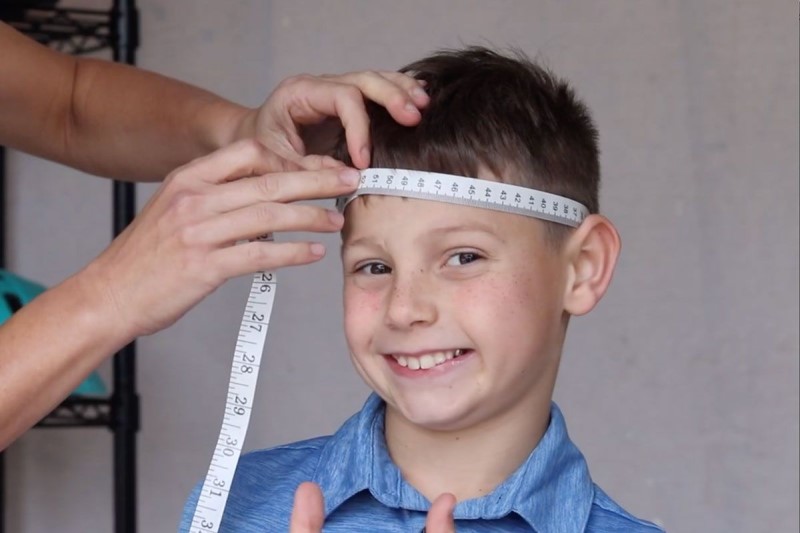
Children’s helmets will usually be listed as baby, toddler, kids’ and youth, though not all brands use this classification system.
The measurements may vary between brands, so it’s important to measure your child’s head circumference, as described above for adult helmets, and check the size range that the specific helmet model is designed for on the maker’s site, or on the helmet or its box.
It’s always a good idea to try a helmet before buying. Kids are often fussy about how things fit or feel, and if they’ve never worn a helmet before they may say it feels funny or they don’t like it.
If the helmet has an adjuster, use it to ensure a close fit that’s not too tight, so the helmet can’t wobble or move around. It should stay on their head without the straps done up if they bend forward.
FAQs
How do you measure a child’s helmet?
Using a soft tape measure, measure the circumference of the child’s head about an inch above their eyebrows, or the thickest part of their head. Compare this measurement to the head size range sticker found on the inside of the helmet
What is the size of a normal mens helmet?
Small: 20″–21.75″ (51cm–55cm) Medium: 21.75″–23.25″ (55cm–59cm) Large: 23.25″–24.75″ (59cm–63cm) Extra large: above 24.75″ (63cm).
How to measure head size?
To ensure you measure the circumference of your head correctly, the tape measure needs to be over the middle of your forehead, just above your ears and sit midway at the back of your head. Do not pull the tape too tightly unless you want your hat to be as tight.
Above is information about How to measure head for helmet? that we have compiled. Hopefully, through the above content, you have a more detailed understanding of How to choose the right size kids’ bike helmet? Thank you for reading our post.

